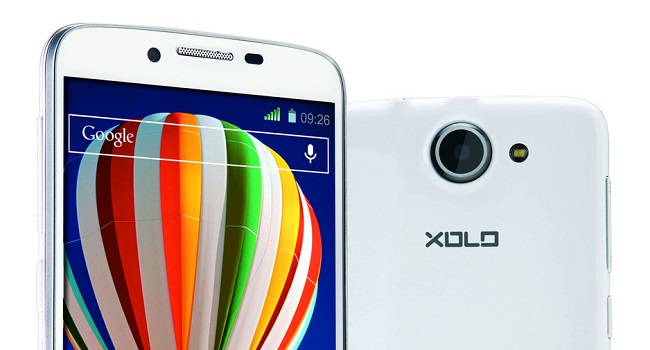Five years ago, launching a decent streaming platform took millions. Now? A teenager with a laptop can build something that reaches millions. That shift…
Xolo Q1000 review: value for money, thy name is Android


Display
At a price point of US$250 and above, I usually expect a smartphone to pack an HD screen resolution for a better web browsing experience. The Xolo Q1000 is no different from its competitors in terms of screen specifications but its display is actually better in real-life use than others.
This screen has One Glass Solution (OGS) which means that it has a nearly non-existent air gap between the display, touch sensor and the scratch resistant screen. It has on-par brightness levels and the black levels are deeper than any other phone in its price range. The display has great viewing angles, due to the use of IPS display and good quality protective glass. There was almost no shift in colors and brightness when you view the display from extreme angles. The contrast ratio wasn’t as good as the SLCD or Super AMOLED units but was still exceptional.
Although it has an ambient light sensor, I found the automatic screen brightness levels to rapidly fluctuate which resulted in flickering screen brightness. This could be resolved with only a minor OTA software upgrade. We’ll talk more software updates later.
Hardware
The most interesting bit about this phone is the processor. The Xolo Q1000 uses a 1.2 GHz quad-core processor from MediaTek which is finding a home in numerous Android device in India and China these days. It uses ARM Cortex A7 CPU cores and a powerful PowerVR SGX544 GPU. This CPU + GPU combination performs better than the one used in the Samsung Galaxy Mega which costs much more than this phone.
The ARM Cortex A7 CPU architecture is designed to be very power-efficient. Using a quad-core combination means that it is powerful enough for high workloads such as multi-tabbed web browsing or HD gaming. The GPU is a popular one and it is also used in the latest Intel CloverTrail + SoC. Even the Apple iPad 3 uses a quad-core variant of the same GPU.
I tried out some popular games such as Temple Run 2, Dead Trigger and ShadowGun. HD gaming performance was decent and smooth, so were the animations and transitions of the operating system. 1GB RAM meant easy multitasking and task switching experience.
All was not flawless though. Firstly, the loudspeaker performance was only average. The 2100 mAh battery struggled to last the night with slightly heavy usage. In spite of using a Cortex A7 CPU, the battery life was not that impressive, possibly because of the slightly inefficient software optimization and/or smaller capacity battery used. The Q700, which is cheaper than this model, uses a larger 2400mAh battery and using a 2100mAh battery instead of better hardware configurations seemed like a childish decision from Xolo.
Design
Design of the Xolo Q1000 is nothing special as it is very similar to other black and white slabs in the smartphone market. It has plastic build with a fake chrome ring around it. The plastic body and the screen are fingerprint magnets but the device still felt solidly built.
The physical buttons are comfortable to press but make a cheaply sounding click sound while doing so. Instead of Google supporting the on-screen buttons starting from Android 4.0 ICS, brands are still using capacitive/physical buttons for navigation. The Xolo Q1000 has a capacitive button marked with a multitasking icon which weirdly acts as a menu button. You have to access multitasking by long-pressing the home button. There is a dedicated camera key though.
This phone is decently thin at 8.8mm but the camera sensor bulge at the back sometimes makes me feel that we are still in 2008. Overall, the design is not as good as the ones from HTC or Nokia but it isn’t as bad as the ones from Micromax either.
Camera
The 8MP camera is not as great as the ones from Samsung and Nokia. In spite of using a BSI sensor, the camera output was strictly average. The autofocusing system was fast enough and there is zero shutter lag option which minimizes the shot-to-shot time. There isn’t a full HD video recording option but the 720p video recording at 30FPS appeared smooth with no stuttering artifacts.
There are various features such as HDR, 3D Shot and Beauty Shot which perform as per the expectations. The 2MP front facing camera is just fine for taking actual self-portraits and good enough for video calls. It did exceptionally well with panoramic images. Other than that, there is nothing special to be noted about the camera, it is as average as its competitors in the similar price range. The similarly priced Nokia Lumia 520 has much better camera than the Xolo Q1000.
Operating system
This device comes pre-loaded with Android 4.2.1 JellyBean but don’t expect it to get the latest operating system upgrades as the local Indian smartphone brands are notoriously known for not providing OS upgrades. If you are the kind of person who changes smartphones yearly, you can go ahead and buy this device because you can survive without OS upgrades in such a scenario.
A dual SIM device meant that there is a special menu for SIM management under the settings screen. It lets you configure and prioritize SIM cards for various uses such as calls, texts and internet. Necessary enhancements such as smart dialing are present. When I dug deeper into security settings, I found a unique voice feature apart from the regular ones such as face unlock, pattern and pin unlock codes.
The thing which bugs me most about smartphones from Indian brands is their UI modifications. This device still has an old school music player and a bunch of pre-installed low quality apps such as file manager, to-do and notes app. User can always find better designed and better performing apps for free. There was no problem in installing any app or game and I didn’t face any incompatibility issues.
If you live in the Indian sub-continent, chances are that your carrier doesn’t offer phones on contract with the yearly or bi-yearly plan. You have to pay for the device upfront. If you are in search of either a decent dual SIM Android phone or a value for money device, the Xolo Q1000, the Micromax Canvas HD and the Karbonn Titanium S5 priced around INR 13,000/US$ 220 are your best options.
Verdict: Personally I hate Micromax for their awkward designs and bad UI. The Karbonn S5 Titanium has better feel to the body but it lacks an HD screen, which I feel is vital these days due to excessive amounts of internet/multimedia content we feed on. So, I would choose the Xolo Q1000 anyway over its competitors due to better all-round specifications, performance and good looks. If you are looking for a similar device from an internationally known brand, you would better wait for the Sony Xperia C which was announced late last month and is expected to launch by August 2013.
Score: 8/10

